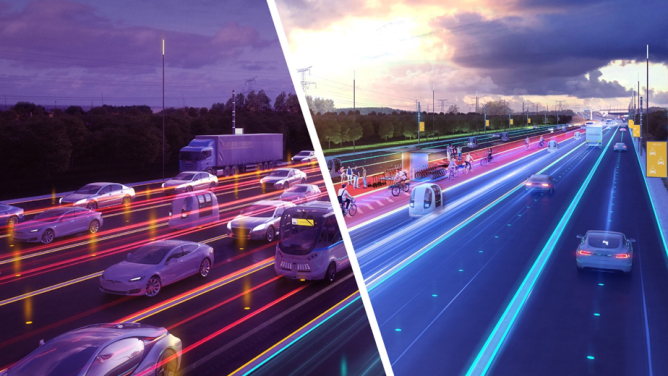For the very first time, inductive charging and conductive rail charging technologies will undergo testing in actual traffic conditions on highways. The A10 highway, located to the west of Paris, will serve as the testing ground, with two separate 2-kilometre sections designated for each technology. This project has emerged from the research conducted by Leonard’s “New Charging Tech” foresight group and is being executed by a consortium led by VINCI Autoroutes, in collaboration with VINCI Construction, Gustave Eiffel University, Hutchinson, Cerema, and two electric road technology suppliers.
Reducing the cost and impact of electric road mobility and freight
Electric Road Systems (ERS), which enable electric vehicles to charge while in motion on the highways, not only facilitate a more efficient distribution of charging infrastructures but also offer the potential to significantly reduce the quantity of vehicle batteries. This reduction, in turn, would mitigate vehicle manufacturing costs and the negative impacts associated with large batteries, such as dependence on strategic raw materials, increased weight, downtime for charging, and more. Moreover, this technology would provide an unrestricted driving range while driving on equipped roadways. Notably, dynamic vehicle charging has the potential to revolutionize long haul transport by cutting CO2 emissions by up to 86% compared to the current fleet of diesel trucks.
Looking ahead to 2035
As per the conclusions of working groups, which brought together transporters, OEMs, road operators, energy suppliers, and charging solution providers under the guidance of the Ministry of Transport in 2021, it is projected that ERS could be deployed on all major French highways by 2035 (Read the full report). By combining the decarbonization potential of electric vehicles with an unrestricted driving range and environmentally sustainable practices, Electric Road Systems pave the way for the future of electric mobility.
To find out more: our publications on electric mobility infrastructures.
Photo : Photothèque VINCI Autoroutes – Olivier Merlot.

